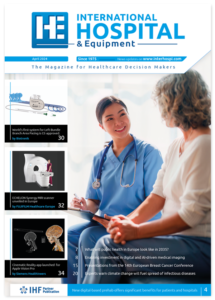Early echocardiography to study pulmonary hypertension in mouse model of bronchopulmonary dysplasia
Sooner is always better when it comes to diagnosing an illness and this is especially true when it comes to lung disease in premature infants, since it can have an impact on a child’s health in the long-term. Researchers at Baylor College of Medicine who focus on bronchopulmonary dysplasia and pulmonary hypertension, a common lung disease in premature infants, have shown that echocardiography can be used to detect the pulmonary hypertension in neonatal mice at an earlier time point than previously thought.
Bronchopulmonary dysplasia is caused by many factors, including inflammation, infection and oxidative stress. Dr. Binoy Shivanna, assistant professor of pediatrics – neonatology at Baylor and Texas Children’s Hospital, and colleagues focus on the oxidative stress and inflammation aspects of the disease, which can damage various parts of the cell and interrupt the development of the lungs. This can lead to problems such as pulmonary hypertension which increases the mortality and long-term problems in infants.
Progress developing improved treatments for the disease has been limited in part by the lack of advanced imaging techniques to detect pulmonary hypertension and lung damage at earlier time points in animal models, which is important to test these potential new treatments. This model could also help researchers better understand how pulmonary hypertension develops, which is an important aspect of Shivanna’s research. So the team set out to develop a mouse model of the disease that replicates many of the features observed in infants with the condition.
To induce oxidative stress and inflammation – two contributing factors of the development of the disease – the researchers exposed a group of newborn mice to 70 percent of oxygen or hyperoxia for 14 days, while a control group received 21 percent oxygen or regular air.
The mice exposed to hyperoxia developed lung oxidative stress, inflammation and lungs that resembled those typical of bronchopulmonary dysplasia and pulmonary hypertension in infants. Furthermore, echocardiography tests performed in the young mice showed that the animals had also developed pulmonary hypertension.
‘It’s important to understand not only the pathology, but also the functional aspect of pulmonary hypertension,’ said Shivanna. ‘This is where the echocardiography test, a non-invasive test that uses high frequency sound waves to take pictures of the heart, comes in.’
Currently, echocardiography tests have been performed in mice at four weeks of age, which might be too late to intervene. Using the latest advances in research technology, Shivanna and colleagues were able to demonstrate that it is possible to functionally detect pulmonary hypertension at an earlier time point, meaning that interventions could potentially take place sooner.
This mouse model can help researchers develop early interventions to prevent or decrease the severity of some of the later onset diseases, such as chronic obstructive pulmonary disease.
Baylor College of Medicine http://tinyurl.com/h3su3ph

